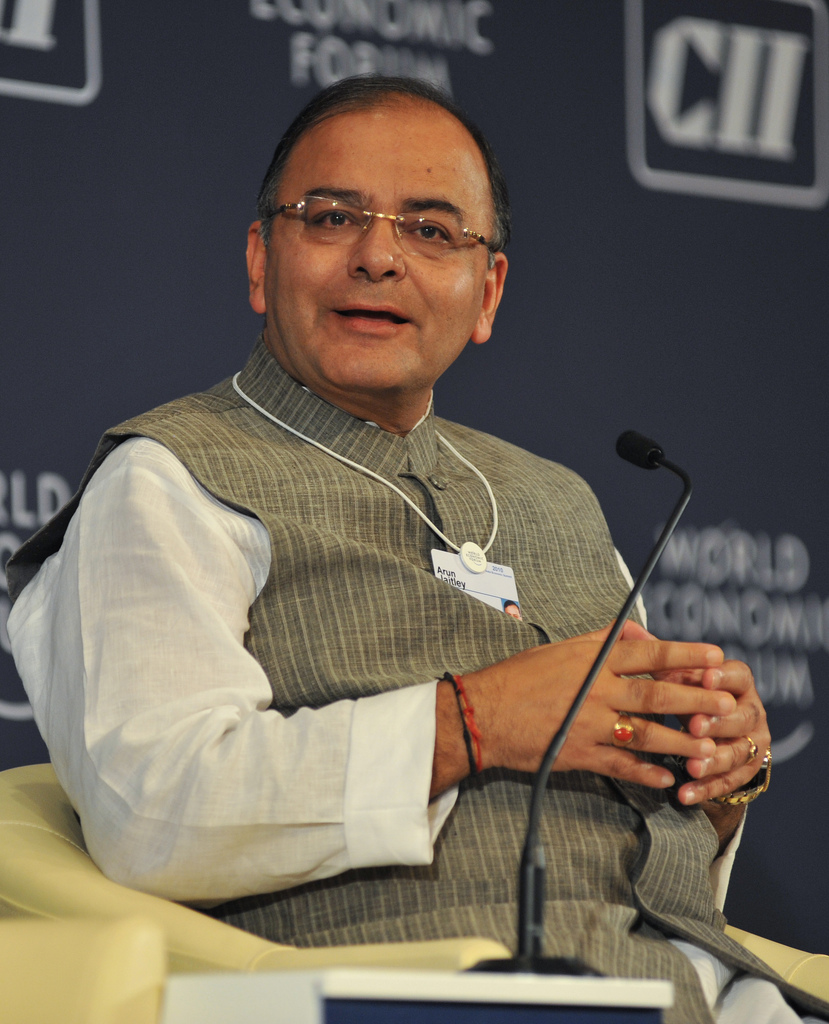Every year, for the last eight to ten days of the year, I try and take a reading holiday. In this time, I try and read a lot of crime fiction which I absolutely love, and non-fiction, which I would normally not read.
This year was no different. I took my regular reading holiday and ended up reading a fairly interesting set of books. All this set me thinking about the current state of the stock market in India. But before I get to that, let me describe what provided the cue for that.
One of the books I read was titled Police at the Station and They Don’t Look Friendly. This is an Irish crime fiction book written by Adrian McKinty. The lead character in this book is named Detective Sean Duffy, who somewhere in the book says: “I went out to the BMW and checked underneath it for bombs. No bombs but I’d always keep checking. As a student I’d listened to an aged Bertrand Russell’s thoughts on the fate of turkeys being fattened for Christmas, the turkeys subscribed to the philosophy of inductivist reasoning and didn’t see doomsday coming. I will.”
The book is set in the late 1980s, when the Irish Republican Army used to be a terror in Ireland. Hence, Inspector Duffy, was in the habit of checking for bombs, every time he drove his car. In the paragraph quoted above, Duffy also talks about the British mathematician and philosopher Bertrand Russell, turkeys and inductivist reasoning. What does he mean?
This is where things get interesting and need some elaboration. Another interesting book that I happened to read was Everything and More-A Compact History of Infinity by the American writer David Foster Wallace. The book is a fascinating history of the mathematical concept of infinity, which anyone without any background in Mathematics can also read and enjoy.
Among other things, Wallace in this book also discusses the principle of induction (the same as inductivist reasoning which Inspector Duffy talks about). As he writes: “The principle of induction states that if something x has happened in certain particular circumstances n times in the past, we are justified in believing that the same circumstances will produce x on the (n+1)th occasion.”
Wallace then goes on to say that the principle of induction is merely an abstraction from experience. He then goes on to give the example of Mr Chicken (you can replace it with Mr Turkey and come up with what Inspector Duffy was talking about). As Wallace writes: “There were four chickens in a wire coop of the garage, the brightest of whom was called Mr Chicken. Every morning, the farm’s hired man’s appearance in the coop area with a certain burlap sack caused Mr Chicken to get excited and start doing warmup-pecks at the ground, because he knew it was feeding time. It was always around the same time t every morning, and Mr Chicken had figured out, (man + sack) = food, and thus was confidently doing his warmup-pecks on that last Sunday morning when the hired man suddenly reached out and grabbed Mr Chicken and in one smooth motion wrung his neck and put him in the burlap sack and bore him off to the kitchen.”
So, what happened here? The chickens in the coop received food at a certain point of time every day. This led them to believe that the future will continue to be like the past and every day they will continue to receive food. Or to put it mathematically, just because something had happened n times, it will happen the (n+1)th time as well.
But what happened the (n+1)th time was that the chickens were killed to be cooked as food. As Wallace puts it: “The conclusion, abstract as it is, seems inescapable: what justifies our confidence in the Principle of Induction is that it has always worked so well in the past, at least up to now.”
This is a concept that Nassim Nicholas Taleb also explains his book Anti Fragile: “A turkey is fed for a thousand days by a butcher; every day confirms to its staff of analysts that butchers love turkeys “with increased statistical confidence.” The butcher will keep feeding the turkey until a few days before thanksgiving. Then comes that day when it is really not a very good idea to be a turkey. So, with the butcher surprising it, the turkey will have a revision of belief-right when its confidence in the statement that the butcher loves turkeys is maximal … the key here is such a surprise will be a Black Swan event; but just for the turkey, not for the butcher.”
As Taleb further writes: “We can also see from the turkey story the mother of all harmful mistakes: mistaking absence of evidence (of harm) for evidence of absence, a mistake that tends to prevail in intellectual circles.”
So, I guess by now, dear reader, the link between chickens (or turkeys for that matter) and the principle of mathematical induction must be very clear. But what is the link with the stock market investors? The Indian stock market investors since November 2016 have been like chickens and turkeys, where they have been well-fed in the form of good returns. And this has led them to assume that the good returns will continue in the time to come. At least, this is the feeling that I get after having spoken at a few investor conferences lately, and yes, the data suggests this as well. The logic as always is: “This time is different”. But is it?
Let’s look at some data which clearly shows that the stock market is clearly in a bubbly territory now. Figure 1 plots the price to earnings ratio of the Nifty 50, which is a reasonably good representation of the overall stock market, from January 1999 onwards.
Figure 1, clearly tells us that the price to earnings ratio of the stocks that constitute the Nifty index are at an extremely high level. The highest price to earnings ratio in the current rally was on December 26, 2017, when it touched 26.97. This means that investors are ready to pay Rs 26.97 for every rupee of profit that the Nifty companies make.
Figure 1:
At the beginning of the year, the price to earnings ratio of Nifty was around 22. From there it has touched nearly 27. This basically means that while the price of the stocks has gone up, the net profit that these companies make, hasn’t been able to rise at the same pace. The average price to earnings ratio since January 1999 has been 19.1. This also suggests that we are clearly in bubbly territory now.
There are 35 other instances of the price to earnings ratio being higher than the 26.97. All these instances were either between January and March 2000, when the dotcom bubble and the Ketan Parekh stock market scam were at their peak, or between December 2007 and January 2008, when the stock market peaked, before the financial crisis which finally led to many Wall Street financial institutions going more or less bust, broke out.
The highest price to earnings ratio of the Nifty was at 28.47 on February 11, 2000. As is clear from Figure 1, after achieving these peaks, the stock market fell dramatically in the days to come. As of March 31, 2017, the market capitalisation of Nifty stocks made up 62.9 per cent of the free float market capitalisation of the stocks listed on the National Stock Exchange. The point being that it is a good representation of the overall
market.
Lest, I get accused of looking at only the best stocks in the market, it is important to state here that price to earnings ratio of other indices is also at very high levels. Take a look Table 1.
Table 1:
| Name of the index | Price to Earnings Ratio as on January 1, 2018 |
|---|---|
| Nifty 100 | 28.1 |
| Nifty 200 | 30.32 |
| Nifty 500 | 32.36 |
Source: Ace EquityThe price to earnings ratio of the indices in Table 1 is at a five-year high. Table 1 tells us very clearly that the price to earnings ratios of the other indices, which are made up of small as well as midcap stocks, have gone up at a much faster rate than the Nifty 50.
This isn’t surprising. Every bull run sees the small and midcap stock rallying much faster than the large cap stocks which constitute the Nifty 50. And given this the fall as and when it happens, always leads to greater losses.
Investors, especially retail investors, continue to bet big on the stock market. Let’s look at Figure 2, which basically plots the total amount of money coming into equity mutual funds (i.e. net investment, which basically means the total amount of new money invested in equity mutual funds during a month minus the total amount of money that is redeemed by investors from these funds).
Figure 2:
Figure 2 basically plots the total net investment in equity mutual funds since December 2012. As is clear from Figure 2, as the stock prices have gone from strength and strength and their price to earnings ratios have gone up, the net investment in equity mutual funds month on month has gone up. In November 2017, Rs 1,95,080 million of net investment was made in Indian equity mutual funds.
This is an excellent example of retail money coming into the stock market, after they have rallied considerably. Will the stock market fall from here? History suggests that the Nifty 50 price to earnings ratio has never crossed a level of 28.47, and we are very close to that level. Having said that I do need to state something that the economist John Maynard Keynes once said: “Markets can remain irrational longer than you can remain solvent”. So, timing the market remains a tricky business.
Also, it is worth remembering here, that while the fund managers would like you to believe that this time it is different, it never really is. And when markets crash after such highs, they do so very quickly.
Let’s take a look at what happened in 2008. Take a look at Figure 3, which basically plots the closing level of Nifty 50, between November 2007 and December 2008.
Figure 3:
On January 8, 2008, the Nifty 50 reached a level of 6,287.85 points. More than 9 months later on October 27, 2008, it had fallen by nearly 60 per cent to a level of 2,524.2 points. Given that the stock market investors have a very short memory, Figure 3 is a very important chart. This happened just ten years back.
Of course, the retail investors who come in at the peak, get hurt the most, during such falls. What all this suggests very clearly is that the retail investors in the stock market are essentially chickens who are currently being fattened with good food in the form of returns. They are also assuming that this will continue. But what history tells us very clearly is that they are waiting to be slaughtered. And given that they will be caught unawares as and when the stock market falls, the bloodbath that follows will be ‘as usual’ extremely deadly.
Regards,

Vivek Kaul
This originally appeared in the Vivek Kaul Letter dated January 4, 2018. It was also published on Equitymaster on January 9, 2018.






